

Luxembourg is usually known only as one of those tiny countries in Europe that people have difficulty locating on a map. It's all too easy to forget about the "Lux" part of the Benelux nations when discussing the Low Countries. However, Luxembourg has its own distinct history formed by sitting astride the border between France and Germany, as well as the distinction of being one of the last remaining pieces of the old Holy Roman Empire to remain as an independent state. (Lichtenstein is the other obvious example.) Luxembourg City is unique in its own right as well, perched atop a series of cliffs and overlooking a preserved medieval town in the valley below. Luxembourg City is one of the least-known beautiful cities to be found in Europe. Today, the small country serves as an international center of finance, one of the three headquarters for the European Union, and (more dubiously) as a tax haven for wealthy individuals. I would be stopping for a day to explore the city as I continued to travel further to the south along the rails.

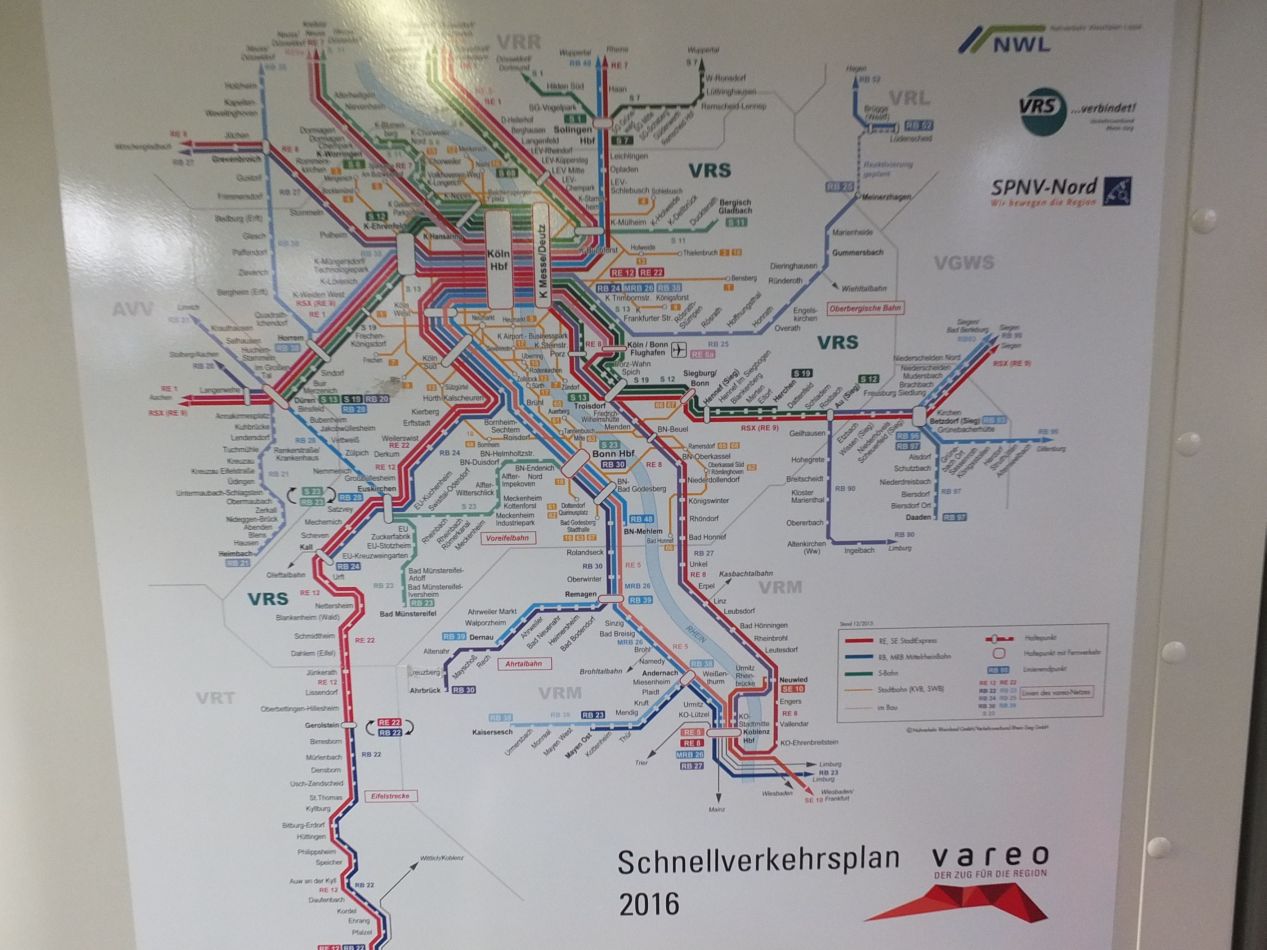
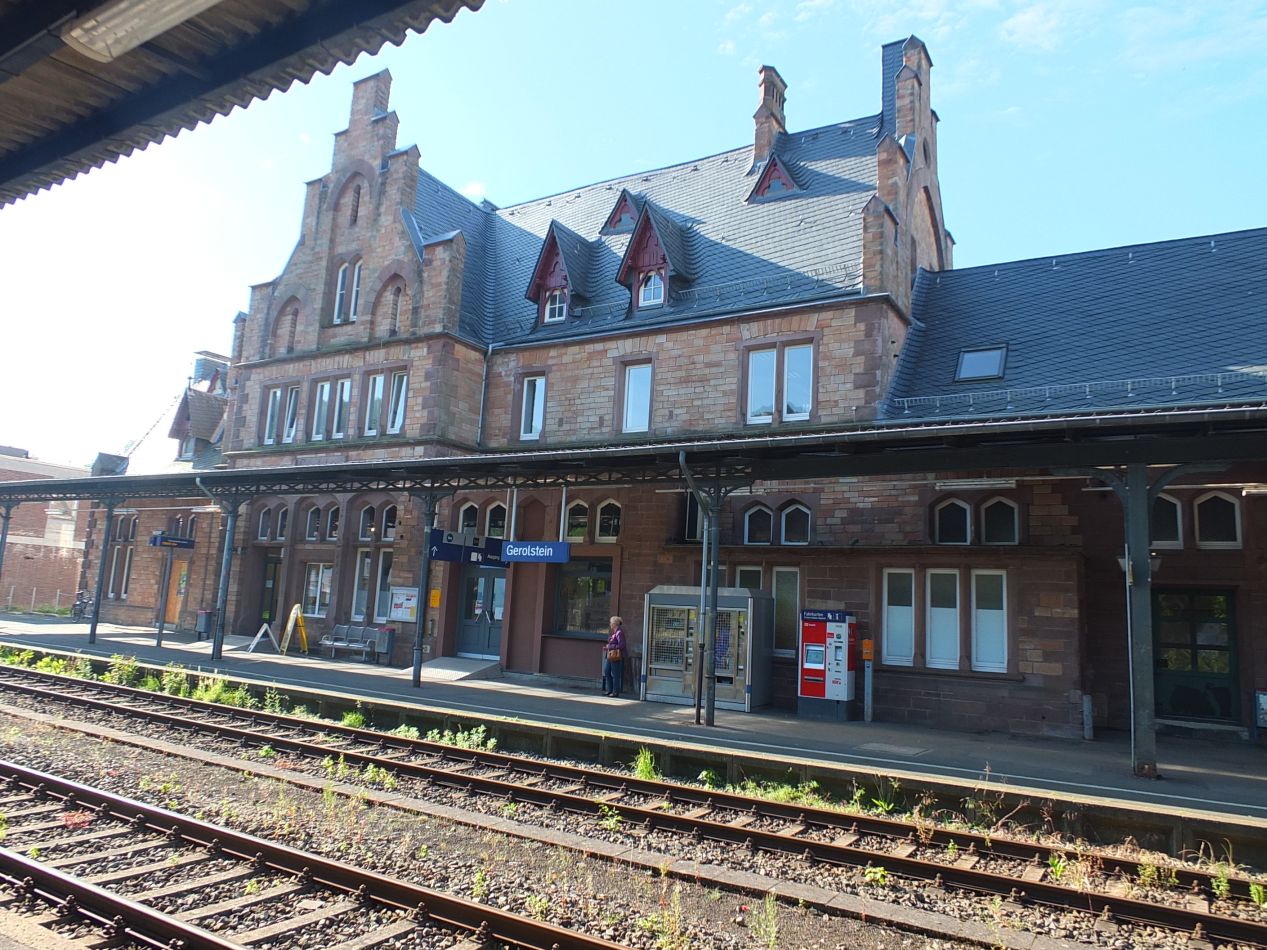

Most of my rail journeys were uneventful affairs, passing smoothly from one major European city to another. The trip on this day proved to be the exception. I needed to travel from Cologne to Trier, a small city in western Germany close to the border with Luxembourg, and from Trier I could transfer onto another train that would take me into Luxembourg City. On the rail map above, Trier was located in the southwest corner, just outside the borders of that image. I boarded one of the trains heading to Trier without thinking anything of it, and for a couple hours nothing out of the ordinary happened. The trouble began when I reached the small town of Gerolstein. My train stopped there for an unusually long time, and then began moving backwards the same direction that it had started. What the heck?! Apparently I had been on the "RE22" line, and that line stops at Gerolstein and heads back to Cologne on a loop. The train announcements had probably made that clear, but this was a local train and everything was in German, a language I didn't know. I rode back to Kall and left the train, transferring onto another one. Now I knew what I had to do: ride the initial train to Gerolstein and then transfer there onto a new train heading south to Trier.




Or at least that's what I thought. When I reached Gerolstein this time, I disembarked from the train, in the expectation that it would once again turn around and head back the way it came. However, I had fooled myself: this time the train kept right on going, leaving me stranded on the platform! Apparently this had been the "RE12" train, one that does not loop back to Cologne but continued on to Trier. I had outsmarted myself.  The next train wouldn't arrive for 90 minutes, leaving me stuck in the middle of nowhere. This little town of Gerolstein was not where I had been expecting to spend so much of my day. There was nothing to do but wait, however, and try to make sure that the same thing didn't happen again in the future. Eventually another train arrived and took me on to Trier, where I could finally transfer yet again to a train heading to Luxembourg City. At least the countryside itself had been beautiful to watch as it passed by, rolling hills of pastoral fields and a sequence of small villages. The river pictured above was the Moselle, a body of water that I knew from histories of the two world wars, and after crossing it, I finally entered the borders of Luxembourg. With the country as a whole being so small, it was only a short distance from there to reach the capital city.
The next train wouldn't arrive for 90 minutes, leaving me stuck in the middle of nowhere. This little town of Gerolstein was not where I had been expecting to spend so much of my day. There was nothing to do but wait, however, and try to make sure that the same thing didn't happen again in the future. Eventually another train arrived and took me on to Trier, where I could finally transfer yet again to a train heading to Luxembourg City. At least the countryside itself had been beautiful to watch as it passed by, rolling hills of pastoral fields and a sequence of small villages. The river pictured above was the Moselle, a body of water that I knew from histories of the two world wars, and after crossing it, I finally entered the borders of Luxembourg. With the country as a whole being so small, it was only a short distance from there to reach the capital city.


The train station in Luxembourg City was located to the south of the city center, a little bit different from some of the other places I had visited. Because the oldest part of the city is located on top of a bluff next to a series of cliffs, it made more sense to put the train tracks a little bit further away. The station itself was an older building, looking like it dated back to the late 19th or early 20th century. As expected, it was much smaller than the grand stations that I had passed through in Brussels, Amsterdam, and Cologne. The most noteworthy feature was this strange design on the ceiling, which I couldn't quite figure out. Was that supposed to be a stylistic interpretation of the globe? Of the constellations in the night sky? It was unclear. There was also a monument to Luxembourg's dead in World War II, which was strangely sitting right next to a fast food kiosk and a buffet line. Like the rest of Luxembourg City, the place was small, distinctive, and a little bit quirky.


The historic city center is reached by walking north from the train station, passing over one of two bridges that span a deep gorge. This bridge was known as La Passerelle, and I had a view of parkland off to my left along with a series of small buildings off to my right. This lower area is where many of the preserved medieval buildings are located, and I would return later in the day to explore the area. For the moment, I continued heading upwards towards the top of the hill, where the oldest part of the city was situated.



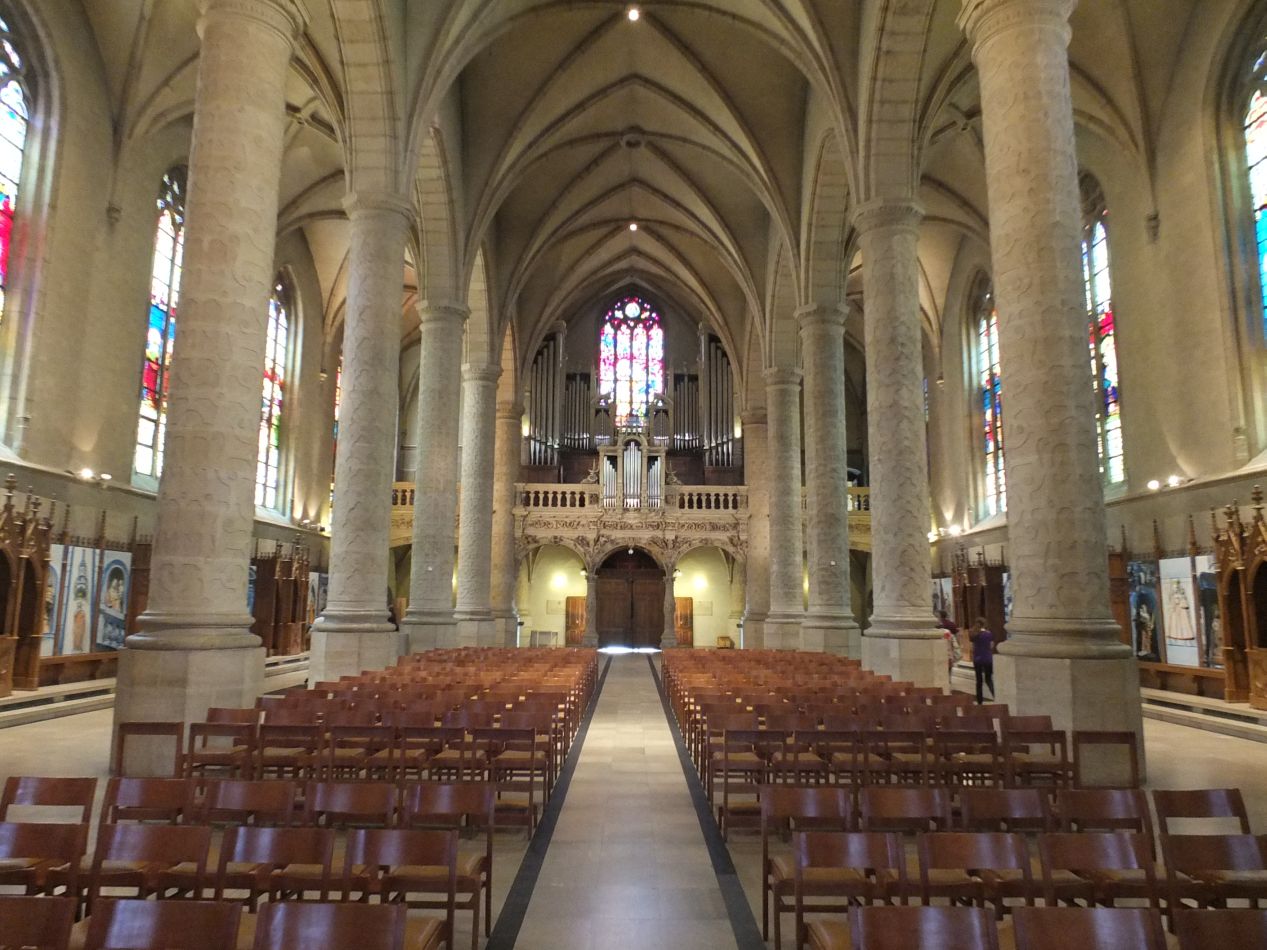


The first site that I came across in the city center was the Notre Dame Cathedral of Luxembourg. This was a much smaller and more recent version of the classic Gothic design, dating from the 17th century instead of the medieval period. I liked this building immediately, with its more intimate feeling and cozier dimensions as compared to the enormous size of a place like Cologne Cathedral. Notre Dame of Luxembourg had some unusual decoration on its central pillars, in a pattern that I didn't recognize. It almost looked like a Celtic design, although I don't think that's what it was. The building's best feature was the altar at the far end of the main aisle, where a beautiful series of stained glass windows cast the incoming sunlight into a dazzling rainbow of colors. This is the national cathedral of Luxembourg, and it reflects the small, wealthy status of this nation.

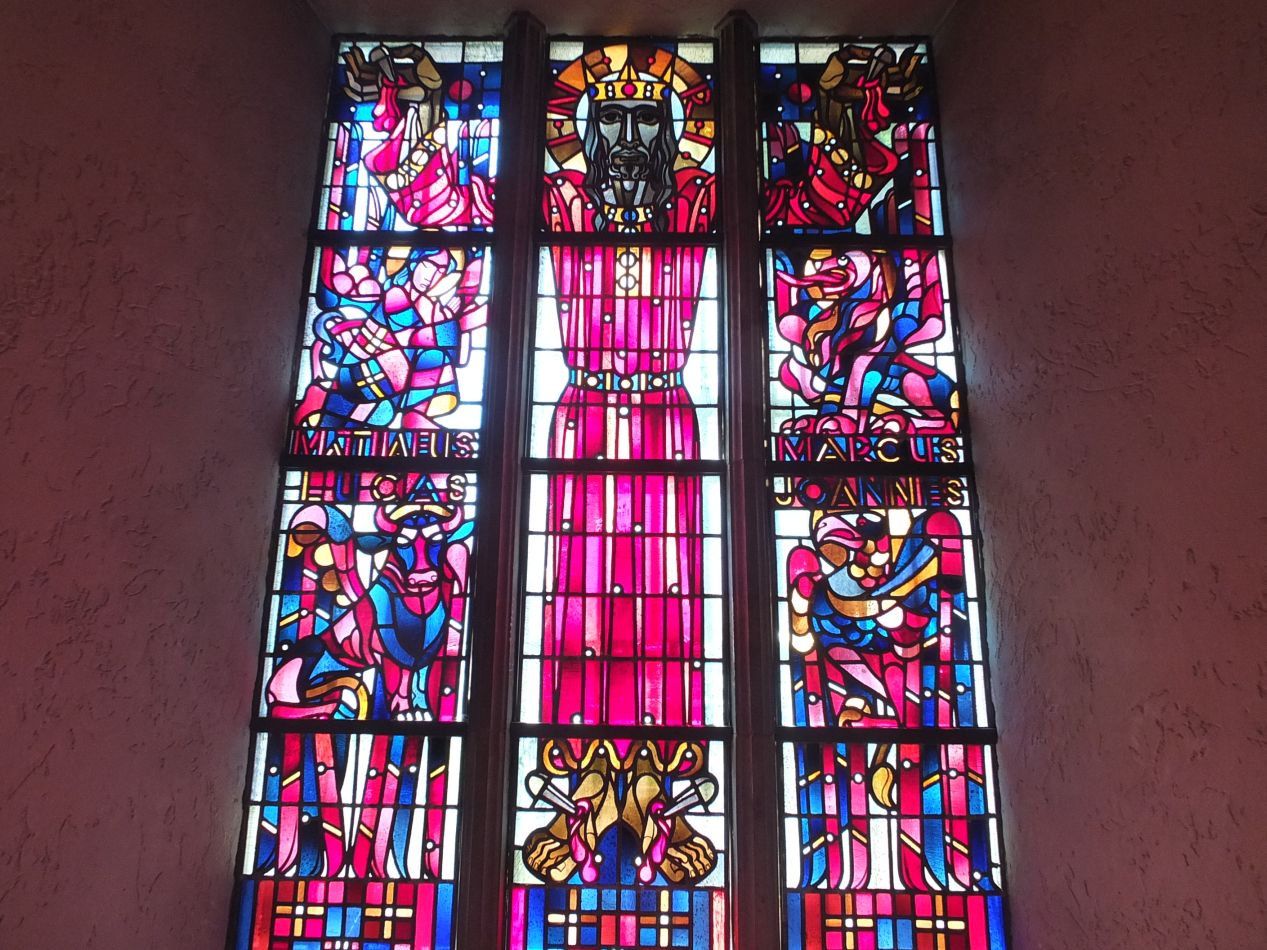


Notre Dame of Luxembourg also has a smaller chapel located in the basement under the main nave. This was a much more cramped space, and conveyed a real feeling of being underground in tight quarters. I understand that this area is sometimes used as a private chapel for the ruling ducal family of Luxembourg, and there's a crypt in the rear where some of them are buried. No one else was down here when I visited, and it almost felt like intruding into a private space. I hurried onwards without spending too much time here.


Next to the cathedral is the Place de la Constitution, holding this monument to the volunteer soldiers who fought for Luxembourg in the two world wars. This small nation was overrun by Germany in both conflicts, and would have been incorporated into German territory if either of the conflicts had turned out differently. The Luxembourgish remain very appreciative of the Allied war effort that helped save their country to this present day; the road where this monument is located has the name "Franklin Roosevelt Boulevard", for example. The monument square overlooks the cliffs that fall away into the park below, and provide a view of the Pont Adolphe bridge off to the west. It was under construction at the time of my visit, which kept me from going over to investigate the historic structure.

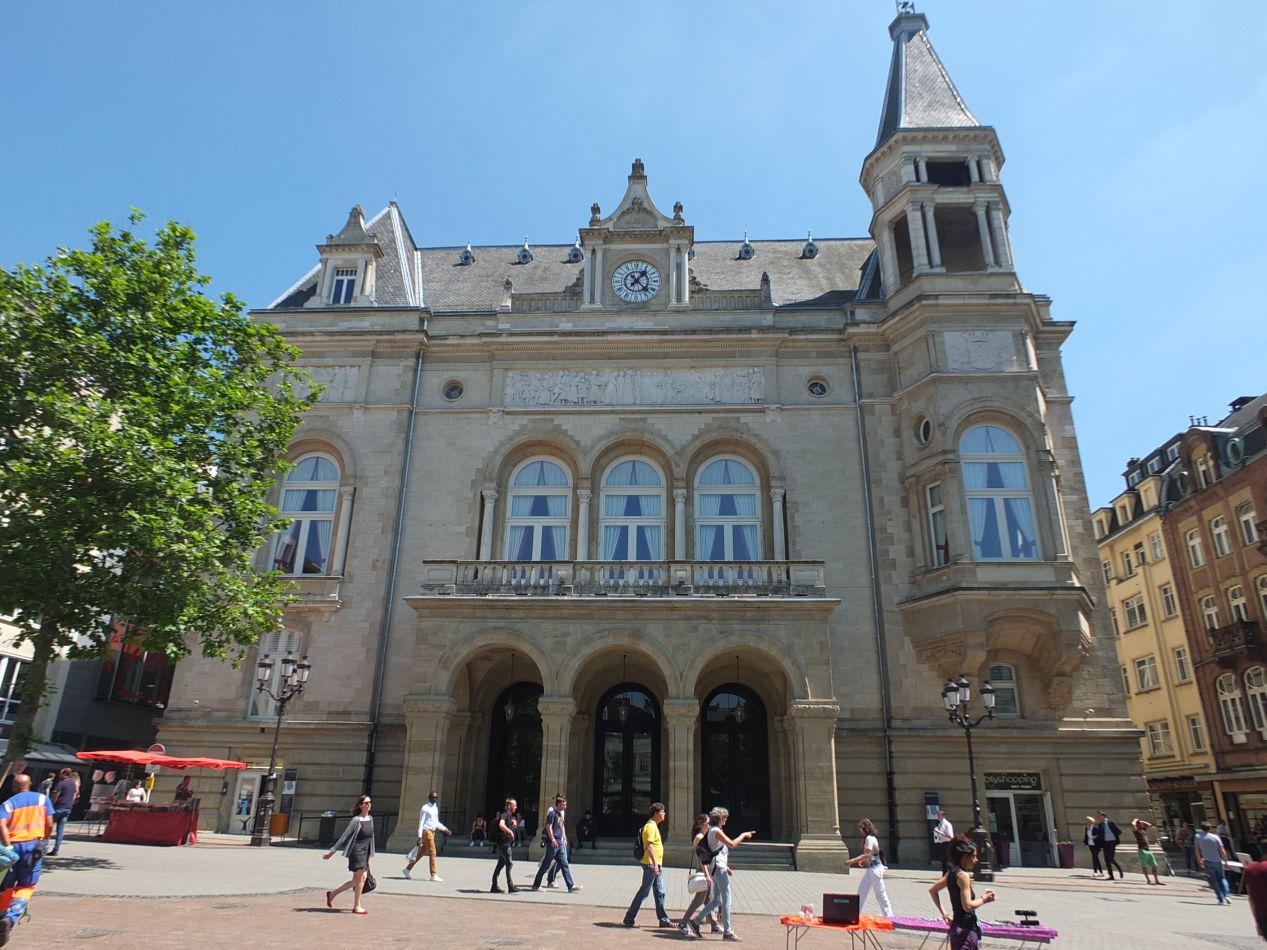


A series of narrow medieval streets led from the Place de la Constitution into the heart of Luxembourg City. Today these are packed with high end stores and restaurants, designed to cater to tourists and the typically wealthy inhabitants of the city. The central square is known as the Place d'Armes, traditionally used for military purposes but today housing more places to eat and shop. The streets were bustling with people on this Thursday afternoon, a mixture of tourists and those who were in the downtown for their normal daily work. There was also this rowdy group of football fans who had traveled to support Aberdeen FC. I presume that they had a football match against a team from Luxembourg City, although I didn't bother to check. They were making a lot of noise and drinking heavily, so more or less acting like your typical stereotype of football fans.

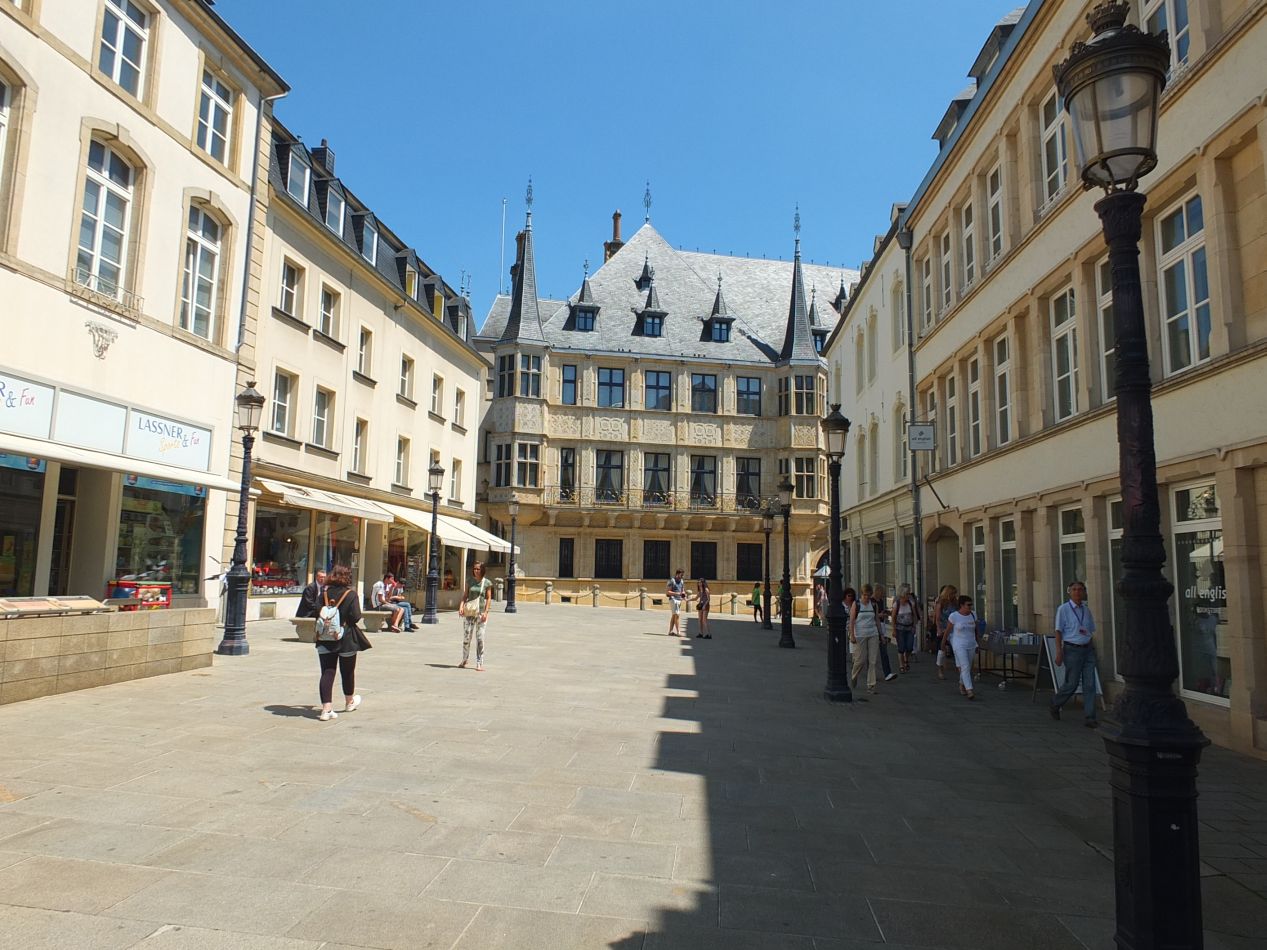


A short distance away from the central square was this building, the Grand Ducal Palace of Luxembourg. It is the official residence of the Grand Duke, the hereditary monarch of the country. Like the other Benelux countries, Luxembourg is a constitutionary monarchy, albeit with a grand duke instead of a king. This particular building was originally the city's town hall before being appropriated by the ducal family in the 19th century. It dates back two hundred years earlier to the 17th century, and much like other royal residences, a ceremonial guard patrols back and forth outside the entrance. I had been hoping to take a tour of this building, but it was not open to the public when I visited. The staff asked me to come back in three weeks, which wasn't particularly helpful. Instead, I'd have to make due with these views from the outside.

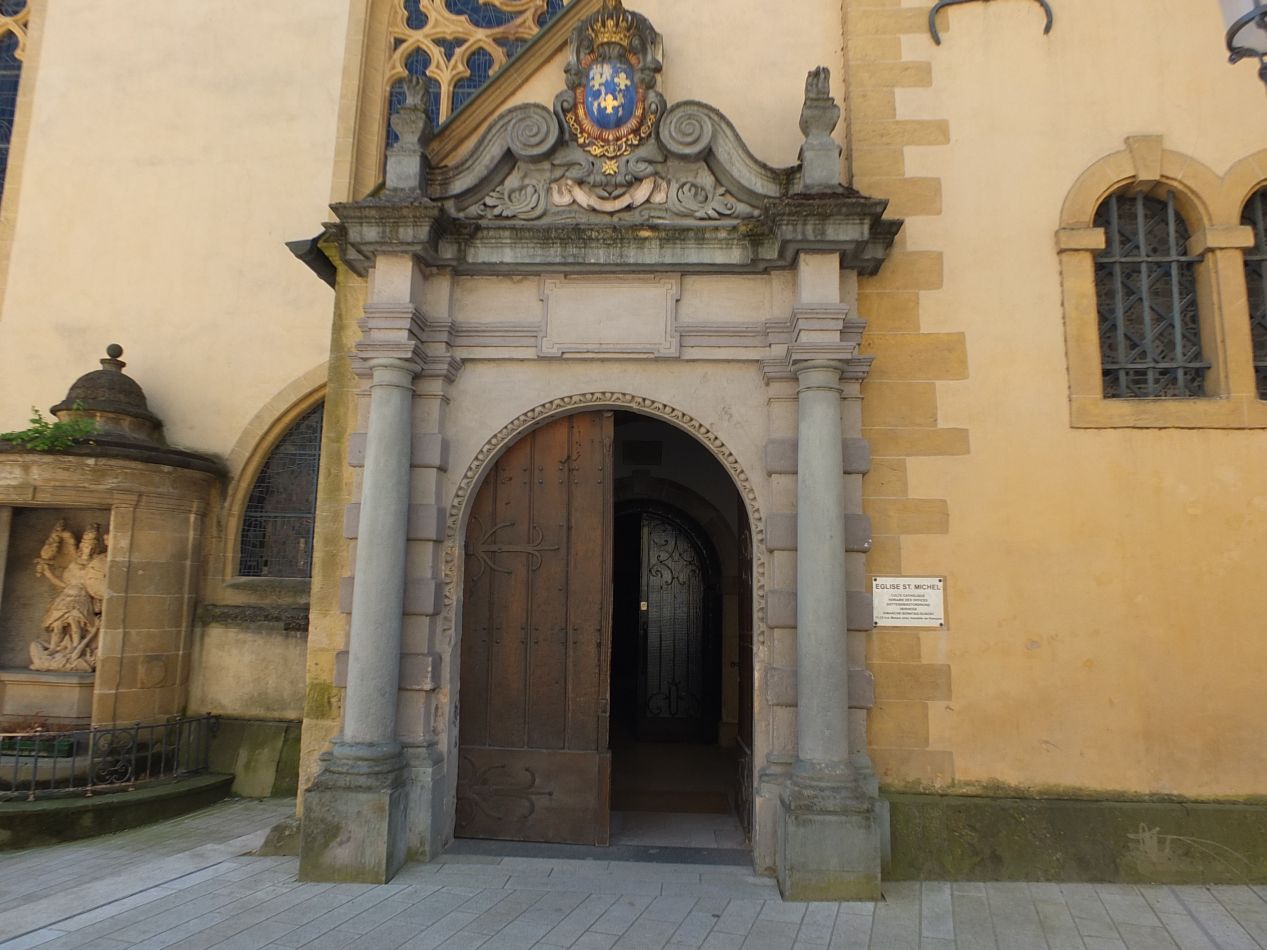


The streets near the Grand Ducal Palace were winding, narrow, and hilly. I ended up wandering around a bit, getting lost somewhat in the twists and turns without being worried overmuch. One of the streets led me here, to the Church of St. Michael (Église Saint-Michel), the oldest church in Luxembourg City. This building was even smaller than the Notre Dame cathedral, and could probably be better described as a chapel than a full church. The familiar stone pillars held up a low ceiling, and there was little room for stained glass here. The altar held a featured painting that was reminicent of some of the Italian churches that I had visited a number of years ago. This particular spot has held a church of some kind since about the year 1000, next to the original castle built atop the city's main hill. This particular building is more recent, constructed at about the same time as the Notre Dame cathedral in the 17th century. With its small size and hidden location tucked away on this side street, it would be easy to miss in passing.


I stumbled across the Luxembourg City History Museum next by accident, and since it was one of the places I had been planning on visiting, decided that this was as good a time as any to see the collections. The museum is dedicated to telling the story of the city's thousand years of history, and it has the advantage of being built directly on top of some of the medieval fortifications of the city. The design takes visitors down underground to the crumbling stone remains of those old walls, and then takes them upwards one floor at a time as it progresses from the ancient to the modern. All of this was music to my ears, and I had a wonderful time exploring through the excellent displays that the museum provided. One of my favorite things was a series of wooden scale models depicting a bird's eye view of the city as it developed over time. Starting in 1000 AD, these models demonstrated how the unique geography of Luxembourg City shaped its construction over time, particularly in light of the heavy fortifications that were built here in the early modern period. This was a walled city that was heavily fought over in the time of Louis XIV.

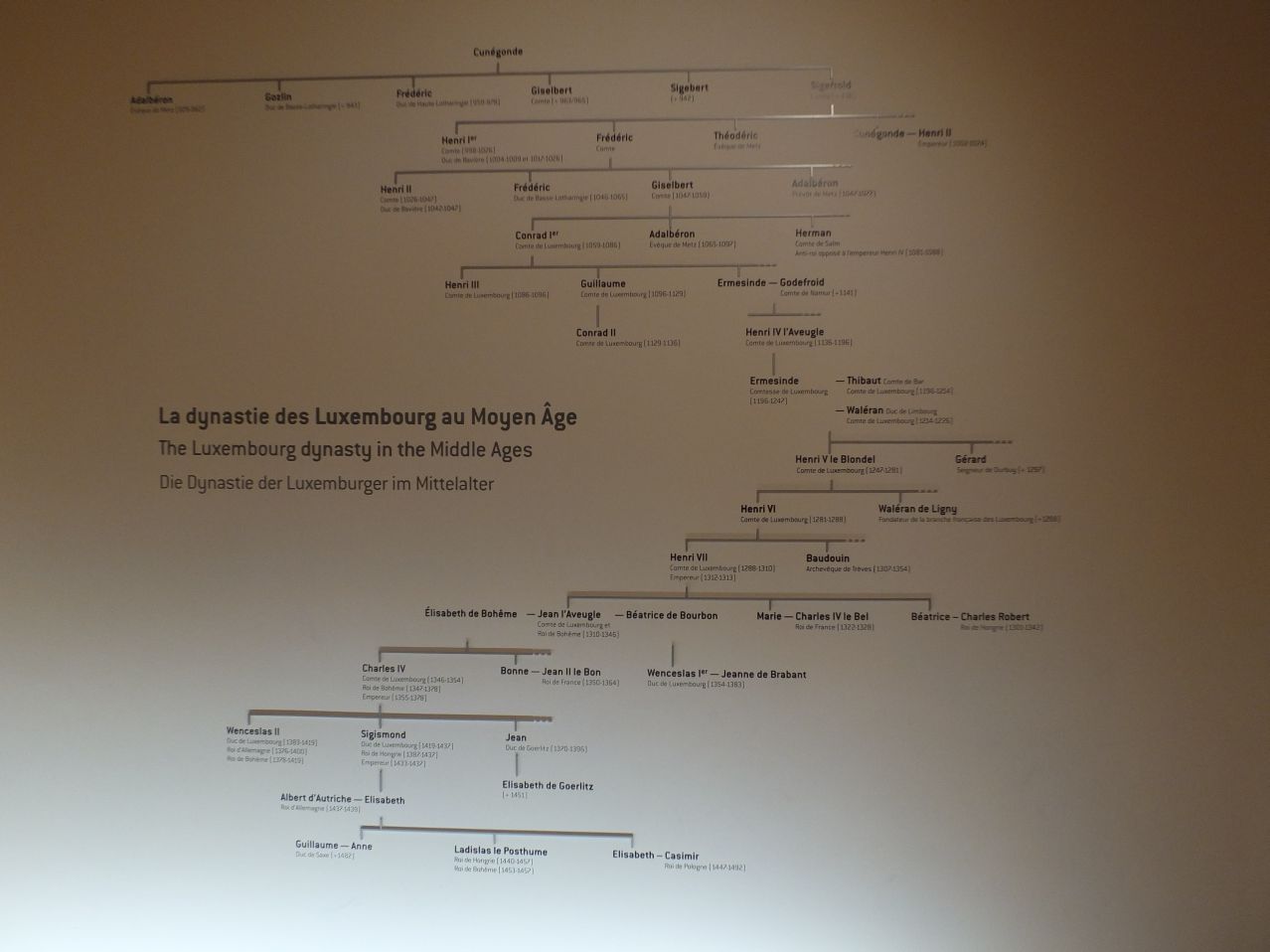


I also learned a good bit about the medieval House of Luxembourg, which I can fairly say I knew nothing about previously, and how they produced several different Holy Roman Emperors in the 14th century. There was a strange room with circular painted walls designed to reproduce what the street in front of the Ducal Palace would have looked like in the 17th century. This produced a confusing visual effect; it almost looked like it was possible to walk off down the cobblestone roads. There was also more information about how Luxembourg was repeatedly partitioned over the years until it reached its current small status, the brief personal union with the Dutch royal family in the 19th century, and the experience of German occupation during the world wars. The museum even had the Grand Duke's throne, and not a reproduction, the real thing. The ducal family is kind enough to let the museum keep it when it's not being used for state occasions. This was a top notch place for a historian to visit, and I probably used up too much of my limited time inside.




Because Luxembourg City is so compact, all of the important buildings are right on top of one another and easily walkable from one to the next. I passed through this small square near the Ducal Palace, and unexpectedly found myself next to the Chamber of Deputies, the location of the Luxembourgish parliament. There was no one guarding the door and it was unlocked; in these situations, I've found it better to beg forgiveness than ask permission, so I headed on inside. I was not able to get a view of the legislative chamber, however, as there were security officials on the inside who weren't too keen on anyone wandering around and taking pictures. Still, it speaks to the more laid back and familiar attitude of a small country like Luxembourg that I was able to enter this building at all without anyone batting an eye. This definitely would not happen in the US.

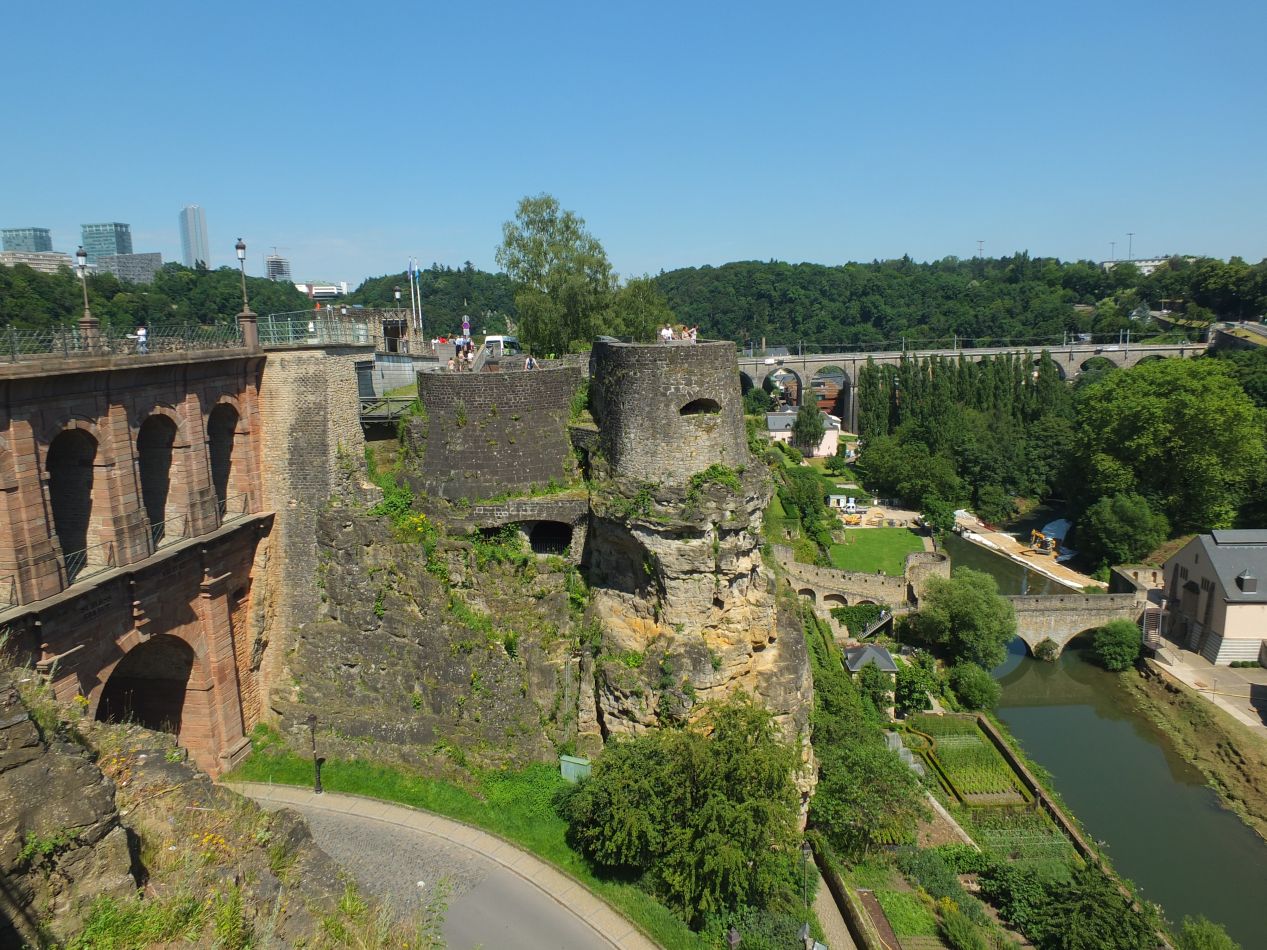
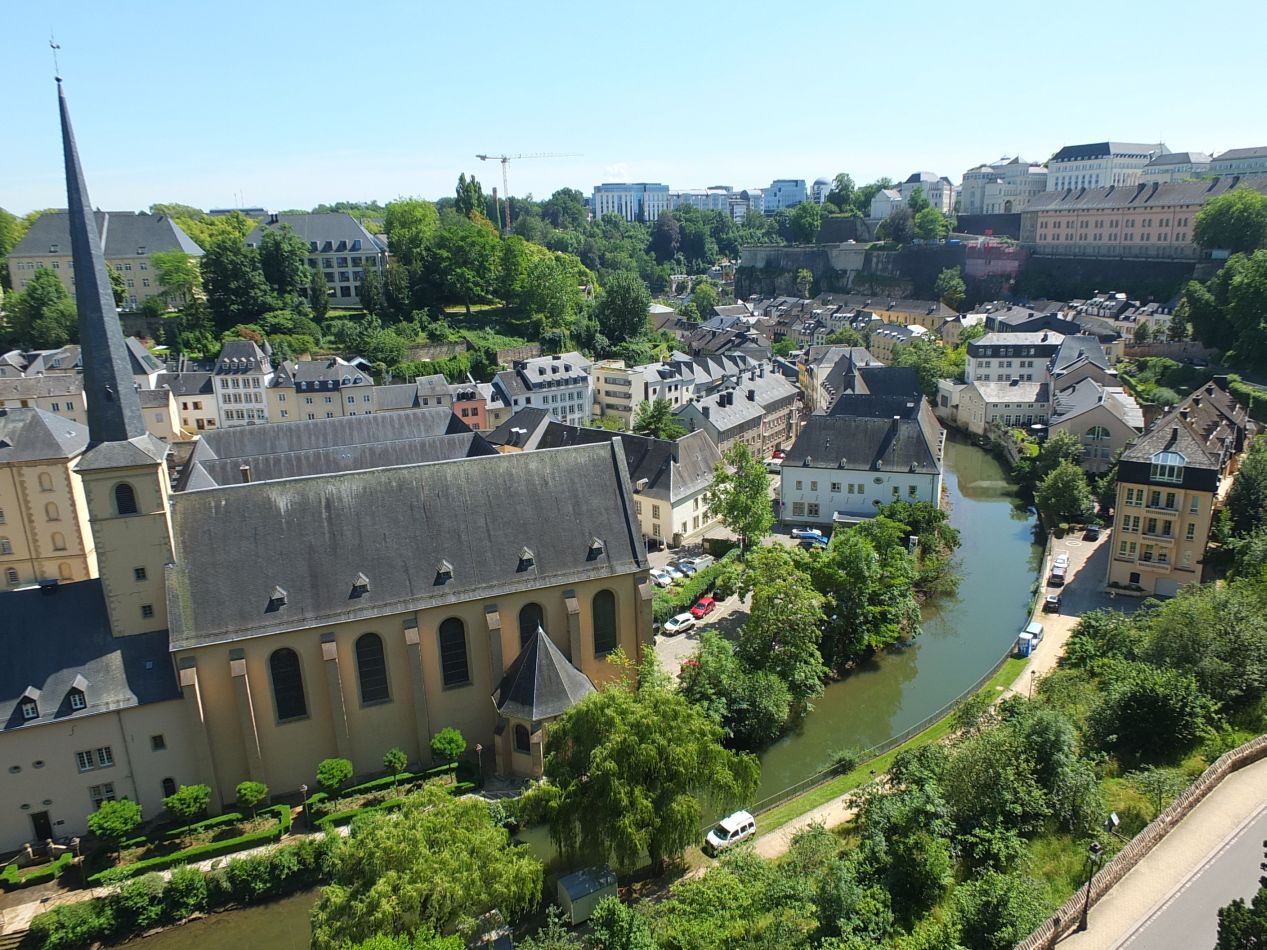

Finally, I headed out of the historic city center and off to the east, onto the small head of land where the original castle of Luxembourg had first been constructed. The view from atop these cliffs is the most famous aspect of Luxembourg City, this stunning vista that looks down on the picturesque medieval town and the little river that flows through it. These cliffs are the whole reason why the city exists at all, forming a powerful natural barrier against invaders. The remnants of the original medieval fortifications can be viewed in one of these pictures, and the cliffs themselves were hollowed out over time with a series of tunnels designed to be used against potential attackers. Even with modern roads and staircases to connect the terrain together, and no one trying to shoot back in defense, getting up and down the cliffs was no easy task. I would not have wanted to try to take Luxembourg City with an army, definitely not. It's one thing to read about places with stout natural defenses, like Luxembourg or Quebec or Gibraltar, and another thing entirely to see them in person.

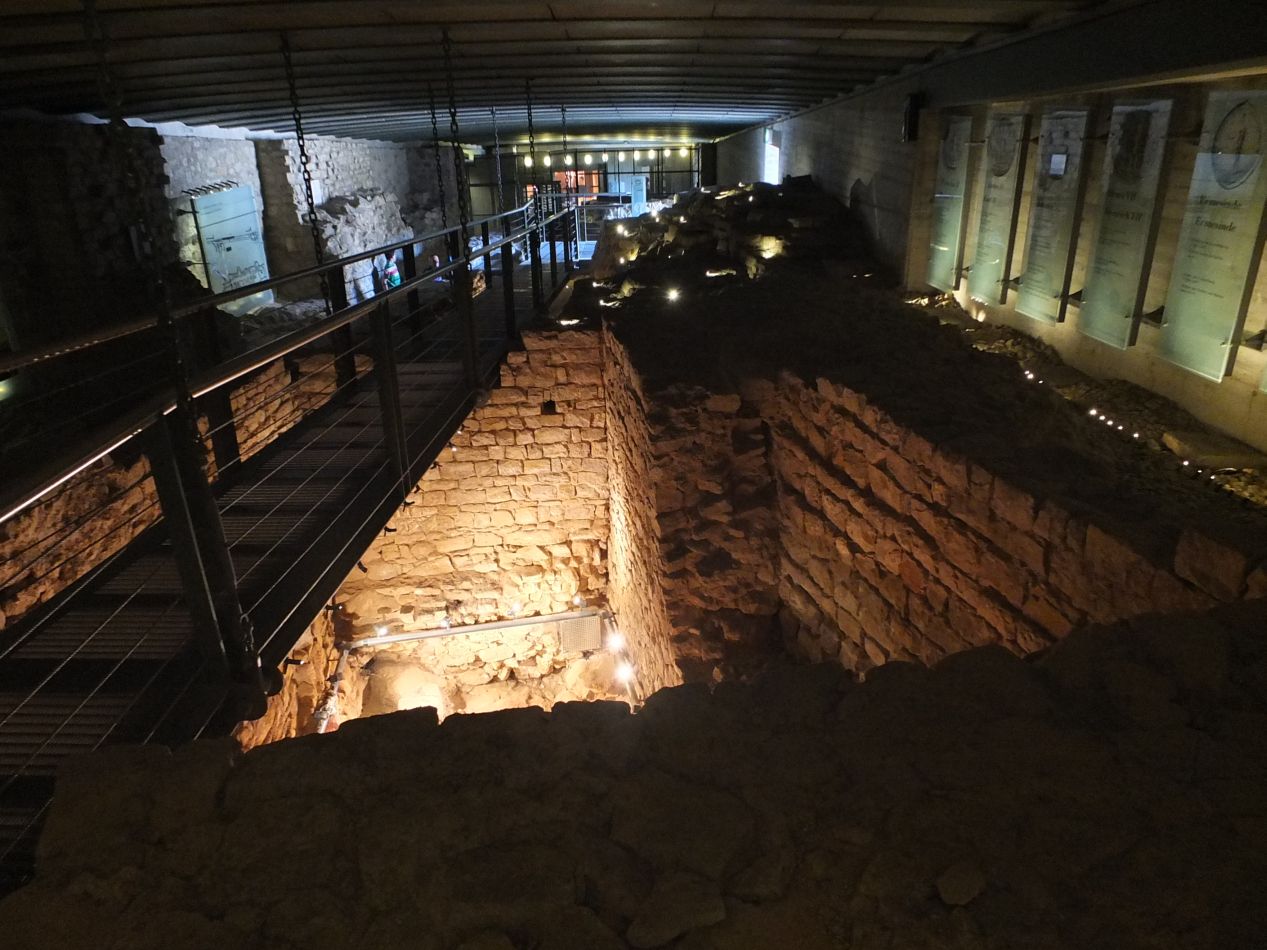


The tunnels that run through the cliffs have been converted into a tourist attraction, and make for another entertaining site to visit in the city. Known as the Casemates du Bock, these passageways run the full extent of the cliffs and provide more views that look out on the surrounding valley. The remnants of the original 11th century castle are here as well, carefully preserved underground to keep them from deteriorating further. Other parts of the casements are more recent, with most of the tunnels built during the early modern period as part of the city's fortifications. They were used on several different occasions when the city came under attack, and most recently they were employed as a bomb shelter during World War II. Today the tunnels are open for exploration, and I couldn't help but think this would be an amazing place to take children. My brother and I would have had a blast running through here when we were growing up. There's more than one level to explore in the tunnels, and some parts can get quite confined and dark. This is not a place to visit for anyone who might feel claustrophobic. Otherwise, it's a ton of fun to traverse and find out what's hidden in the underground depths.

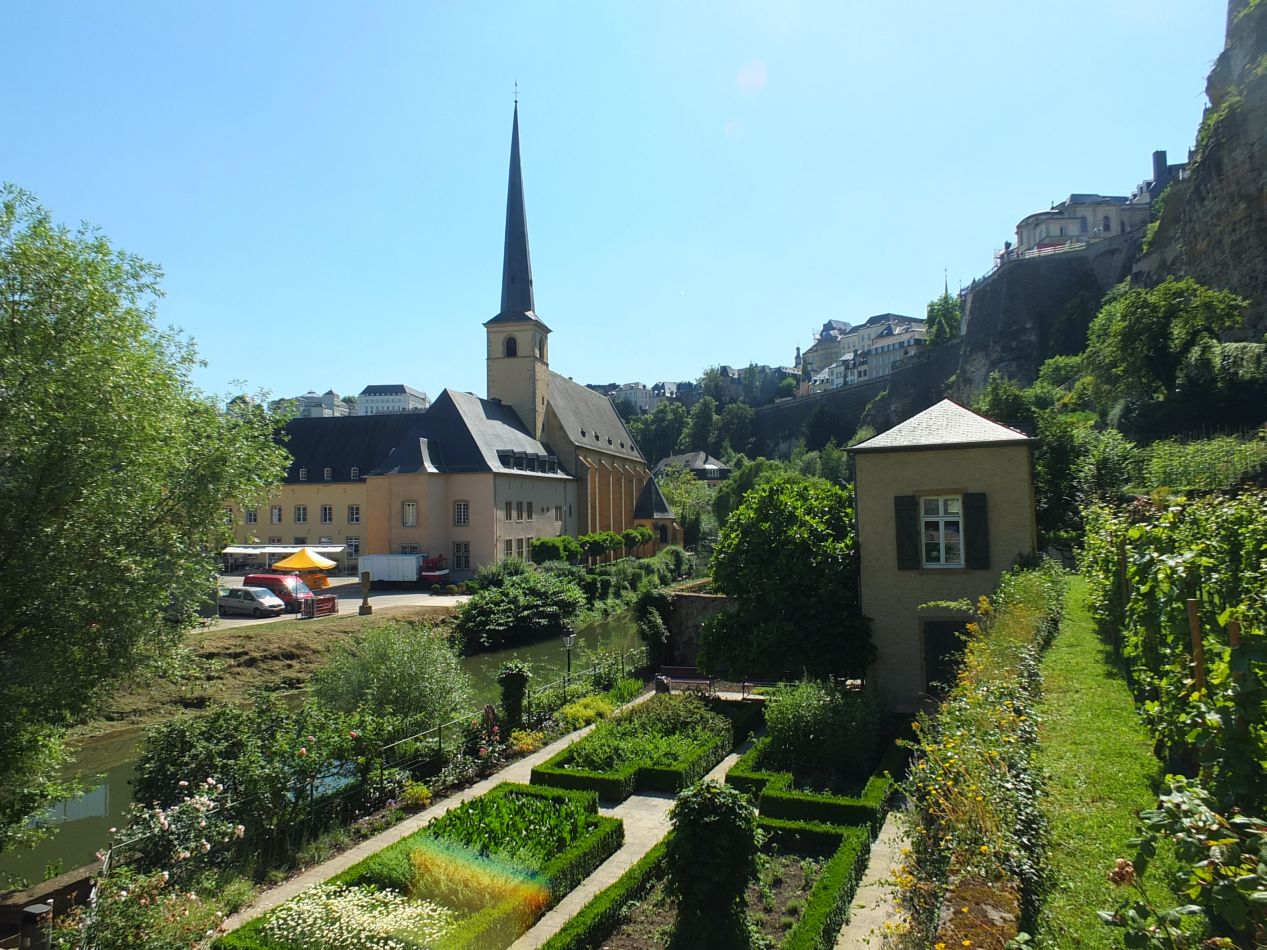


After leaving the casements, I climbed down from the cliffs and crossed underneath the spit of land overhead. This led me down into the little medieval town next to the cliffs, which has been preserved largely unchanged from centuries earlier. The church next to the small river is St Jean du Grund, a historic location that was closed for the day when I arrived. The village itself was made up of small stores and cafes, similar to what I had seen up in the main town square earlier. These places were a bit on the pricey side, and I decided that I would get dinner up in the main city above. The village itself was beautiful and fun to explore, but there was still one problem: getting back up to Luxembourg City proper. That required a walk up a very steep hill, which I probably should have photographed but did not due to growing exhaustion. The downside to those amazing cliffside views was the need to walk up and down some tall hills.


I had dinner back in the Place d'Armes, getting an Italian meal this night. There was an athletics competition taking place on the television while I was eating, and to my surprise it was the European Athletics Championships, taking place in the very same public park in Amsterdam that I had visited just two days earlier! What an odd coincidence that it would be on TV during one of the few times I had the chance to watch. The Museumplein was easily recognizable, with the Rijksmuseum visible in the background of some of the wide angle shots. This made the track and field events taking place much more interesting to watch. Afterwards, I made my way to my hostel for the night, which was a youth hostel run by Hosteling International. On this occasion, it truly was a YOUTH hostel, as the building was full of kids attending a summer camp of some kind, several hundred kids aged 10-17 doing what kids do, running around and making lots of noise. I hadn't really wanted to spend the night sharing a room with a group of 15 year olds, but there wasn't much I could do about it. At the very least, it was... memorable.
Later in the evening, a good number of the hostel visitors grouped together to watch the semifinals of Euro 2016. Quite aside from being the semifinals, this was a titanic match pitting France against Germany, and needless to say, there's a bit of a history between those two countries. I was delighted at how this played into my own travel plans: watching a match between France and Germany, here in Luxembourg, literally sitting right on the historically disputed border between the two nations? Short of watching this contest in Alsace or Lorraine (where I was heading the next day), it couldn't be much more appropriate. The crowd watching in the hostel's bar area was split evenly between French fans and German fans, heightening the mood further. France scored on a penalty right before halftime, and then salted the victory away with another goal in the second half to win 2-0. The French fans were delighted, as they were hosting the Euro 2016 tournament and appeared to be big favorites in the upcoming final against Portugal. I was looking forward to seeing the conclusion in a couple of days as well.
In the meantime though, it was time to get some much-needed sleep and prepare for the following day's journey. Next up would be a stop in Strasbourg, my one day spent in France on this tour through Europe.



